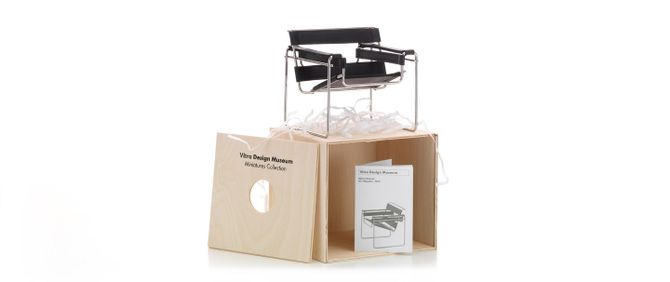
Miniatures Collection - B3 Wassily
Marcel Breuer, 1925
Marcel Breuer replaced the massive upholstered corpus of the traditional club chair with a skeletonlike construction made out of bent steel tubing, thereby overcoming the physical weightiness of conventional seating. He exploited the elasticity of the material, complementing it with tautly stretched fabric strips of reinforced canvas for the seat and back. The B3 did not acquire the name »Wassily« until the beginning of the sixties, when the Italian furniture producer Dino Gavina purchased the manufacturing rights: Marcel Breuer had designed the armchair for the house of the painter Wassily Kandinsky, who taught at the Bauhaus from 1922 until 1933.
Miniatures Collection
Da oltre due decenni il Vitra Design Museum realizza repliche in miniatura dei pezzi più importanti della propria collezione di mobili di design. La Miniatures Collection riassume l'intera storia del mobile industriale di design, spaziando da Storicismo e Art Nouveau a Bauhaus e Nuova Oggettività, da Radical Design e Postmodernismo fino ai giorni nostri. Misuranti esattamente un sesto rispetto alle dimensioni degli storici originali, le sedie sono tutte perfettamente in scala e ricreano con precisione i più minuscoli dettagli di costruzione, materiale e colore. Gli elevati standard di autenticità comprendono addirittura le venature naturali del legno, la riproduzione delle viti e la replica delle elaborate tecniche artigianali. Tutto questo ha reso le miniature apprezzati oggetti per collezionisti e ottimi strumenti didattici per università, scuole di design e studi di architetti.